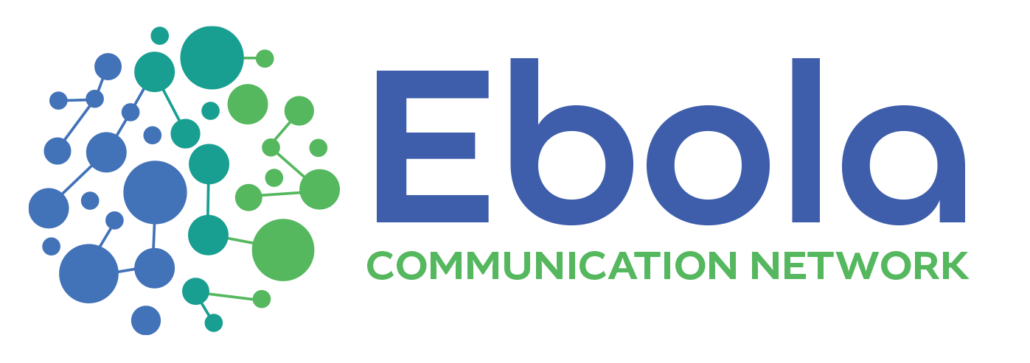Transmission – County- level Liberia October 13 2014
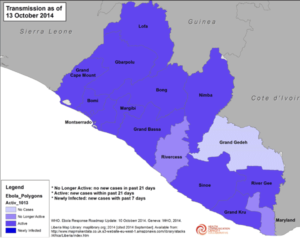 Transmission – County- level Liberia October 13, 2014 (Full-sized image)
Transmission – County- level Liberia October 13, 2014 (Full-sized image)
 Transmission – County- level Liberia October 13, 2014 (Full-sized image)
Transmission – County- level Liberia October 13, 2014 (Full-sized image)
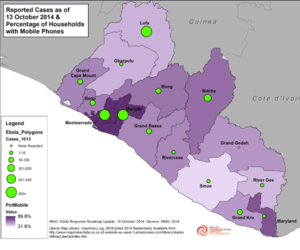 Reported Ebola Cases & Percentage of Households with Mobile Phones, as of October 13, 2014 (Full Size JPG)
Reported Ebola Cases & Percentage of Households with Mobile Phones, as of October 13, 2014 (Full Size JPG)
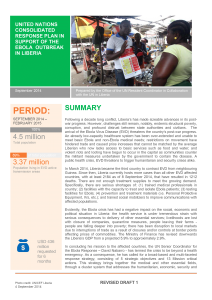 In light of escalating Ebola Virus Disease crisis in Liberia, this Consolidated Plan builds on the original Joint UN Support Plan launched by the UN system in Liberia on the 14th of August in Liberia.
In light of escalating Ebola Virus Disease crisis in Liberia, this Consolidated Plan builds on the original Joint UN Support Plan launched by the UN system in Liberia on the 14th of August in Liberia.
United Nations Consolidated Response Plan in Support of the Ebola Outbreak in Liberia
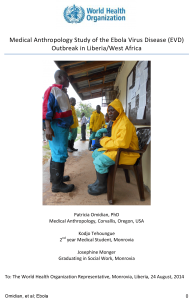 This study was carried out to better understand the local beliefs and practices likely to enhance or hinder efforts to respond to the Ebola Virus Disease outbreak in Liberia.
This study was carried out to better understand the local beliefs and practices likely to enhance or hinder efforts to respond to the Ebola Virus Disease outbreak in Liberia.
Medical Anthropology Study of the Ebola Virus Disease (EVD) Outbreak in Liberia/West Africa
This poster lists and illustrates five ways to keep Ebola from spreading:
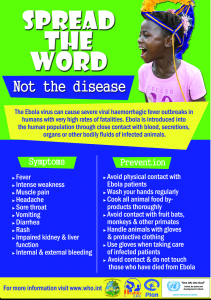 The poster has information about how the virus is transmitted from animals to humans. The audience is Liberian communities where introduction of the virus from bushmeat is a primary danger. The poster is clear, bright, and understandable.
The poster has information about how the virus is transmitted from animals to humans. The audience is Liberian communities where introduction of the virus from bushmeat is a primary danger. The poster is clear, bright, and understandable.
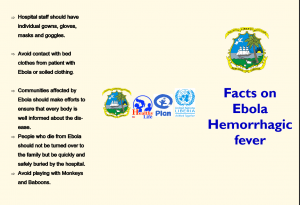 http://www.unicef.org/cbsc/files/Ebola_Brochure-Liberia-EN.pdf
http://www.unicef.org/cbsc/files/Ebola_Brochure-Liberia-EN.pdf
This pamphlet explains what Ebola is, how it is spread, its signs and symptoms, and how it can be prevented. It directs information to community members as well as to health workers.
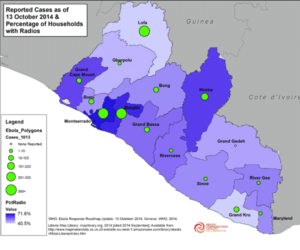 Reported Ebola Cases & Percentage of Households with Radios, as of October 13, 2014 (Full Size JPG)
Reported Ebola Cases & Percentage of Households with Radios, as of October 13, 2014 (Full Size JPG)
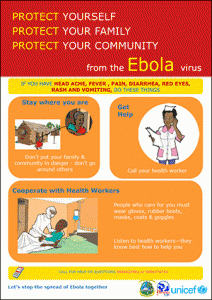 This poster’s audience is the general community in Liberia and has information on protecting yourself and your family, and steps to take to seek care. It has clear calls to action, is well-designed, and the use of graphics makes it appropriate for low-literacy populations.
This poster’s audience is the general community in Liberia and has information on protecting yourself and your family, and steps to take to seek care. It has clear calls to action, is well-designed, and the use of graphics makes it appropriate for low-literacy populations.

The Ebola Communication Network was originally developed by the Health Communication Capacity Collaborative (Cooperative Agreement #AID-OAA-A-12-00058) and expanded under Breakthrough ACTION (Cooperative Agreement #AID-OAA-A-17-00017) both under the leadership of Johns Hopkins Center for Communication Programs. This website is now maintained by Johns Hopkins Center for Communication Programs and its contents are the sole responsibility of CCP. The contents of this website do not necessarily reflect the views of USAID, the United States Government, or Johns Hopkins University.
